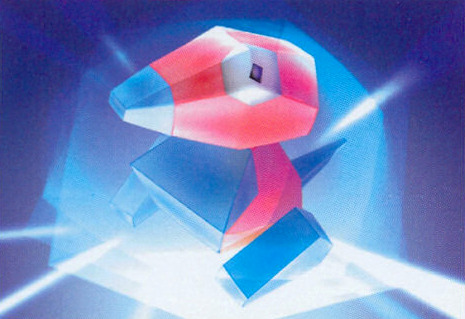#nde
Text
Fascinating video: NDE and manifesting
youtube
Woman dies, spends several years in other realities and learns that you create your reality with your beliefs. Then she realizes all she needs to do to return to her old body is think of it, and she wakes up in the hospital cured of all her illness.
Fog state = void state?
162 notes
·
View notes
Text





Nissan Concept 20-23, 2023. A sporty urban electric concept car designed at Nissan Design Europe (NDE) and unveiled by CEO Makoto Uchida to celebrate studio’s 20 years in London. The simple brief was to design a car which the NDE team would like to drive on the streets of the city where they work.
#Nissan#Nissan Concept 20-23#concept#design study#2023#20th anniversary#NDE#Nissan Design Europe#EV#electric car#urban car#city car
209 notes
·
View notes
Text
Deeply staring into the stars makes you realise that this whole thing is energetic.
80 notes
·
View notes
Text
The Myth of Dreamless Sleep
Consciousness never "switches off" because it isn't generated by the brain. Its sensory inputs can be switched off - during sleep or general anesthesia, for instance - but your consciousness is still there. For example, a small but consistent number of patients report out-of-body experiences (OOBEs) or near-death experiences (NDEs) while under general anesthesia.
#consciousness#dreams#out of body experience#near death experiences#nde#oobe#cognitive neuroscience#neuropsychology#neurology#sleep#rem sleep
29 notes
·
View notes
Text
If we can just ignore the physical world for a moment, because when we die it seizes to exist. All that we have left are our feelings and emotions. That’s all memories are, we remember how past events felt.
After we die, our feelings and emotions are catalogued into experiences. That’s all life is — how did it feel to relate to our lived experiences.
If you don’t pay attention to how life felt, you are missing out on life.

46 notes
·
View notes
Text
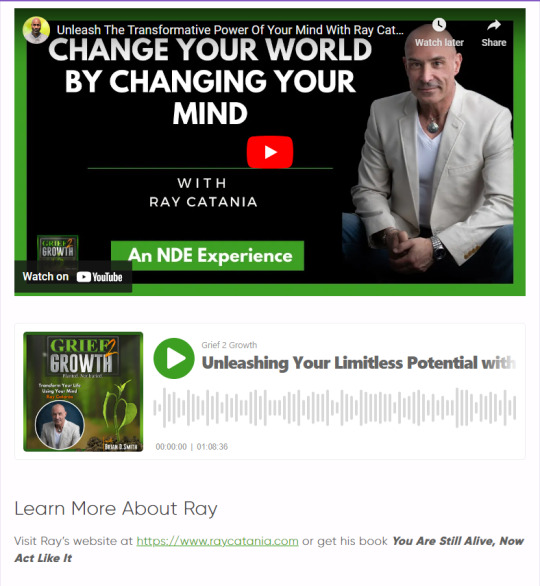
The Transformative Power Of The Mind
By Brian Smith March 7, 2024
Ray Catania is an expert on the transformative power of the mind.
Introduction
After a miraculous near-death experience (NDE) at age 20 that transformed his entire perspective on life, Ray Catania embarked on a profound journey of spiritual awakening and self-discovery. Now an acclaimed author, metaphysical teacher, and coach, Ray offers eye-opening insights on manifestation, ego, and reaching higher states of consciousness.
In this episode, Ray candidly shares his story and the wisdom gleaned from 20+ years of studying ancient spiritual teachings and cutting-edge science. He aims to empower you to harness the incredible power of your mind to manifest the life you desire and evolve into your highest self.
#limitless#spiritualawakening#spiritual#enlightenment#awakening#nde#grateful#honored#afterlife#mindset
6 notes
·
View notes
Text
“Staying happy and optimistic is a bit difficult in this millennium. For our own sake it is still the best to fearlessly aim on that direction despite all negativity which we need to survive from every day. TV, radio and internet show us bad news about our miserable world 24/7. If we can’t find a filter to all that, we might end up being victims of media’s parade of oppressive, one after another cruelty. There’s plenty of wars and rumors about wars. Even that we have rooted in the culture of chaos and violence, we have to make conscious choice of not to get stuck in hopelessness’ hypnotic over advertising. We have to stand brave in that believe that life is wonderful opportunity to experience wonderful miracles and adventures. It is not easy to choose to be happy in the world which is full of sorrow. That, however, still is our most sure way to victory. We have to keep our attention on that how we want things to be and on changes what we must do, not on misery and hopeless circumstances which we hope to get rid of.
Life was never meant to be a struggle. Despite how much we see worldwide struggle on the news every evening, that’s not the fate of mankind. We can’t find solution on world’s evilness by choosing to be part of it. We become part of the problem when we sink into the actions of indifference or revenge or in the thoughts of violence and judgement.”
- Dannion Brinkley (Secrets of The Light: Lessons from Heaven)
#text#wisdom#NDE#near death experience#Dannion Brinkley#spiritual stuff#I recommend this book to everyone!#It's very heart warming#and eye opening#mostly about it how we need to learn to love and spread love
86 notes
·
View notes
Text
youtube
Pediatric Hospice Nurse REVEALS SHOCKING Experiences Of Terminal Children
6 notes
·
View notes
Text
The soul is intention, the ego is desire.
#philosophy#philosopher#nde#art#obe#surreal#surrealism#universe#plato#love#soul#intention#unconditional love#selfless#selflessness
56 notes
·
View notes
Text
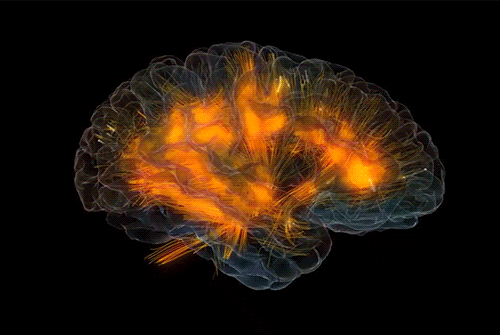
Is the Brain a Driver or a Steering Wheel?
This three part series summarizes what science knows, or thinks it knows, about consciousness. In Part 1 What Does Quantum Physics Imply About Consciousness? we looked at why several giants in quantum physics - Schrodinger, Heisenberg, Von Neumann and others - believed consciousness is fundamental to reality. In Part 2 Where Does Consciousness Come From? we learned the "dirty little secret" of neuroscience: it still hasn't got a clue how electrical activity in the brain results in consciousness.
In this concluding part of the series we will look at how a person can have a vivid conscious experience even when their brain is highly dysfunctional. These medically documented oddities challenge the materialist view that the brain produces consciousness.
Before proceeding, let's be clear what what is meant by "consciousness". For brevity, we'll keep things simple. One way of looking at consciousness is from the perspective of an outside observer (e.g., "conscious organisms use their senses to notice differences in their environment and act on their goals.") This outside-looking-in view is called behavioral consciousness (aka psychological consciousness). The other way of looking at it is the familiar first-person perspective of what it feels like to exist; this inside-looking-out view is called phenomenal consciousness (Barušs, 2023). This series is only discussing phenomenal consciousness.
Ready? Let’s go!

Source: Caltech Brain Imaging Center
A Hole in the Head
Epilepsy is a terrible disease in which electrical storms in the brain trigger seizures. For some people these seizures are so prolonged and frequent that drastic action is needed to save their lives. One such procedure is called a hemispherectomy, the removal or disconnection of half the brain. Above is an MRI image of a child who has undergone the procedure.
You might think that such radical surgery would profoundly alter the memory, personality, and cognitive abilities of the patient.
You would be wrong. One child who underwent the procedure at age 5 went on to attend college and graduate school, demonstrating above average intelligence and language abilities despite removal of the left hemisphere (the zone of the brain typically identified with language.) A study of 58 children from 1968 to 1996 found no significant long-term effects on memory, personality or humor, and minimal changes in cognitive function after hemispherectomy.
You might think that, at best, only a child could successfully undergo this procedure. Surely such surgery would kill an adult?
You would be wrong again. Consider the case of Ahad Israfil, an adult who suffered an accidental gunshot to the head and successfully underwent the procedure to remove his right cerebral hemisphere. Amazingly, after the five hour operation he tried to speak and went on to regain a large measure of functionality (although he did require use of a wheelchair afterwards.)
Another radical epilepsy procedure, a corpus collosotomy, leaves the hemispheres intact but severs the connections between them. For decades it was believed that these split-brain patients developed divided consciousness, but more recent research disputes this notion. Researchers found that, despite physically blocking all neuronal communication between the two hemispheres, the brain somehow still maintains a single unified consciousness. How it manages this feat remains a complete mystery. Recent research on how psychedelic drugs affect the brain hints that the brain might have methods other than biochemical agents for internal communication, although as yet we haven't an inkling as to what those might be.
So what's the smallest scrape of brain you need to live? Consider the case of a 44-year-old white collar worker, married with two children and with an IQ of 75. Two weeks after noticing some mild weakness in one leg the man went to see his doctor. The doc ordered a routine MRI scan of the man's cranium, and this is what it showed.
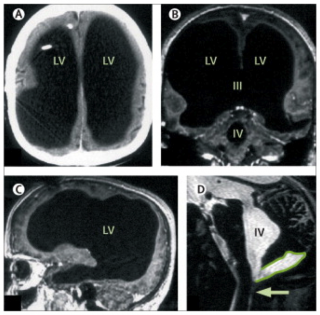
Source: The Lancet
What you are seeing here is a giant empty cavity where most of the patient's brain should be. Fully three quarters of his brain volume is missing, most likely due to a bout of hydrocephalus he experienced when he was six months old.

Last Words
Many unusual phenomena have been observed as life draws to an end. We're going to look at two deathbed anomalies that have neurological implications.
The first is terminal lucidity, sometimes called paradoxical lucidity. First studied in 2009, terminal lucidity refers to the spontaneous return of lucid communication in patients who were no longer thought to be medically capable of normal verbal communication due to irreversible neurological deterioration (e.g., Alzheimers, meningitis, Parkinson's, strokes.) Here are three examples:
A 78-year-old woman, left severely disabled and unable to speak by a stroke, spoke coherently for the first time in two years by asking her daughter and caregiver to take her home. She died later that evening.
A 92-year-old woman with advanced Alzheimer’s disease hadn’t recognized her family for years, but the day before her death, she had a pleasantly bright conversation with them, recalling everyone’s name. She was even aware of her own age and where she’d been living all this time.
A young man suffering from AIDS-related dementia and blinded by the disease who regained both his lucidity and apparently his eyesight as well to say farewell to his boyfriend and caregiver the day before his death.
Terminal lucidity has been reported for centuries. A historical review found 83 case reports spanning the past 250 years. It was much more commonly reported in the 19th Century (as a sign that death was near, not as a phenomenon in its own right) before the materialist bias in the medical profession caused a chilling effect during the 20th Century. Only during the past 15 years has any systematic effort been made to study this medical anomaly. As a data point on its possible prevalence a survey of 45 Canadian palliative caregivers found that 33% of them had witnessed at least one case of terminal lucidity within the past year. Other surveys found have that the rate of prevalence is higher if measured over a longer time window than one year, suggesting that, while uncommon, terminal lucidity isn't particularly rare.
Terminal lucidity is difficult to study, in part because of ethical challenges in obtaining consent from neurocompromised individuals, and in part because its recent identification as a research topic presents delineation problems. However, the promise of identifying new neurological pathways in the brains of Alzheimer's and Parkinson's patients has gotten a lot of attention. In 2018 the US National Institute on Aging (NIA) announced two funding opportunites to advance this nascent science.
Due to the newness of this topic there will continue be challenges with the data for some time to come. However, its impact on eyewitnesses is indisputably profound.
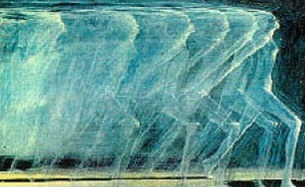
Near Death Experiences
The second deathbed anomaly we will take a look at are Near-Death Experiences (NDEs.) These are extraordinary and deeply personal psychological experiences that typically (but not always) occur during life-threatening emergencies such as cardiac arrest, falls, automobile accidents, or other traumatic events; they are also occasionally reported during general anesthesia. Much of the research in this area has focused on cardiac arrest cases because these patients are unconscious and have little to no EEG brain wave activity, making it difficult to account for how the brain could sustain the electrical activity needed to perceive and remember the NDE. This makes NDEs an important edge case for consciousness science.
NDEs are surprisingly common. A 2011 study published by the New York Academy of Sciences estimated that over 9 million people in the United States have experienced an NDE. Multiple studies have found that around 17% of cardiac arrest survivors report an NDE.
There is a remarkable consistency across NDE cases, with experiencers typically reporting one or more of the following:
The sensation of floating above their bodies watching resuscitation efforts, sometimes able to recall details of medical procedures and ER/hallway conversations they should not have been aware of;
Heightened sensations, occasionally including the ability of blind and deaf people to see and hear;
Extremely rapid mental processing;
The perception of passing through something like a tunnel;
A hyper-vivid life review, described by many experiencers as "more real than real";
Transcendent visions of an afterlife;
Encounters with deceased loved ones, sometimes including people the experiencer didn’t know were dead; and
Encounters with spiritual entities, sometimes in contradiction to their personal belief systems.
Of particular interest is a type of NDE called a veridical NDE. These are NDEs in which the experiencer describes events that occurred during the period when they had minimal or no brain activity and should not have been perceived or remembered if the brain were the source of phenomenal consciousness. These represent about 48% of all NDE accounts (Greyson 2010). Here are a few first-hand NDE reports.
A 62-year-old aircraft mechanic during a cardiac arrest (from Sabom 1982, pp. 35, 37)
A 23-year-old crash-rescue firefighter in the USAF caught by a powerful explosion from a crashed B-52 (from Greyson 2021, pg. 27-29)
An 18-year-old boy describes what it was like to nearly drown (from the IANDS website)
There are thousands more first person NDE accounts published by the International Association for Near-Death Studies and at the NDE Research Foundation. The reason so many NDE accounts exist is because the experience is so profound that survivors often feel compelled to write as a coping method. Multiple studies have found that NDEs are more often than not life-changing events.
A full discussion of NDEs is beyond the scope of this post. For a good general introduction, I highly recommend After: What Near-Death Experiences Reveal about Life and Beyond by Bruce Greyson, MD (2021).

The Materialist Response
Materialists have offered up a number of psychological and physiological models for NDEs, but none of them fits all the data. These include:
People's overactive imaginations. Sabom (1982) was a skeptical cardiologist who set out to prove this hypothesis by asking cardiac arrest survivors who did not experience NDEs to imagine how the resuscitation process worked, then comparing those accounts with the veridical NDE accounts. He found that the veridical NDE accounts were highly accurate (0% errors), whereas 87% of the imagined resuscitation procedures contained at least one major error. Sabom became convinced that NDEs are real. His findings were replicated by Holden and Joesten (1990) and Sartori (2008) who reviewed veridical NDE accounts in hospital settings (n = 93) and found them to be 92% completely accurate, 6% partially accurate, and 1% completely inaccurate.
NDEs are just hallucinations or seizures. The problem here is that hallucinations and seizures are phenomena with well-defined clinical features that do not match those of NDEs. Hallucinations are not accurate descriptions of verifiable events, but veridical NDEs are.
NDEs are the result of electrical activity in the dying brain. The EEGs of experiencers in cardiac arrest show that no well-defined electrical activity was occurring that could have supported the formation or retention of memories during the NDE. These people were unconscious and should not have remembered anything.
NDEs are the product of dream-like or REM activity. Problem: many NDEs occur under general anesthesia, which suppresses dreams and REM activity. So this explanation cannot be correct.
NDEs result from decreased oxygen levels in the brain. Two problems here: 1) The medical effects of oxygen deprivation are well known, and they do not match the clinical presentation of NDEs. 2) The oxygen levels of people in NDEs (e.g., during general anesthesia) has been shown to be the same or greater than people who didn’t experience NDEs.
NDEs are the side effects of medications or chemicals produced in the brain (e.g. ketamine or DMT). The problem here is that people who are given medications in hospital settings tend to report fewer NDEs, not more; and drugs like ketamine have known effects that are not observed in NDEs. The leading advocate for the ketamine model conceded after years of research that ketamine does not produce NDEs (Corraza and Schifano, 2010).

Summing Up
In coming to the end of this series, let's sum up what we discussed.
Consciousness might be wired into the physical universe at fundamental level, as an integral part of quantum mechanics. Certainly several leading figures in physics thought so - Schrodinger, Heisenberg, Von Neumann, and more recently Nobel Laureate Roger Penrose and Henry Stapp.
Materialist propaganda notwithstanding, neuroscience is no closer to identifying Neural Correlates of Consciousness (NCCs) than it was when it started. The source of consciousness remains one of the greatest mysteries in science.
Meanwhile, medical evidence continues to pile up that there is something deeply amiss with the materialist belief that consciousness is produced by the brain. In a sense, the challenge that NDEs and Terminal Lucidity pose to consciousness science is analogous to the challenge that Dark Matter poses to physics, in that they suggest that the mind-brain identity model of classic materialist psychology may need to be rethought to adequately explain these phenomena.
Ever since the Greeks, science has sought to explain nature entirely in physical terms, without invoking theism. It has been spectacularly successful - particularly in the physical sciences - but at the cost of excluding consciousness along with the gods (Nagel, 2012). What I have tried to do in this series is to show that a very credible argument can be made that materialism has the arrow of causality backwards: the brain is not the driver of consciousness, it's the steering wheel.
I don't think we are yet ready to say what consciousness is. Much more research is needed. I'm not making the case for panpsychism, for instance - but I do think consciousness researchers need to throw off the assumption drag of materialism before they're going to make any real progress.
It will be up to you, the scientists of tomorrow, to make those discoveries. That's why I'm posting this to Tumblr rather than an academic journal; young people need to hear what's being discovered, and the opportunities that these discoveries represent for up and coming scientists.
Never has Planck's Principle been more apt: science advances one funeral at a time.
Good luck.
For Further Reading
Barušs, Imants & Mossbridge, Julia (2017). Transcendent Mind: Rethinking the Science of Consciousness. American Psychological Association, Washington DC.
Barušs, Imants (2023). Death as an Altered State of Consciousness: A Scientific Approach. American Psychological Association, Washington DC.
Batthyány, Alexander (2023). Threshold: Terminal Lucidity and the Border of Life and Death. St. Martin's Essentials, New York.
Becker, Carl B. (1993). Paranormal Experience and Survival of Death. State University of New York Press, Albany NY.
Greyson, Bruce (2021). After: A Doctor Explores What Near-Death Experiences Reveal about Life and Beyond. St. Martin's Essentials, New York.
Kelly, Edward F.; Kelly, Emily Williams; Crabtree, Adam; Gauld, Alan; Grosso, Michael; & Greyson, Bruce (2007). Irreducible Mind: Toward a Psychology for the 21st Century. Rowman & Littlefield, New York.
Moody, Raymond (1975). Life After Life. Bantam/Mockingbird, Covington GA.
Moreira-Almeida, Alexander; de Abreu Costa, Marianna; & Coelho, Humberto S. (2022). Science of Life After Death. Springer Briefs in Psychology, Cham Switzerland.
Penfield, Wilder (1975). Mystery of the Mind: A Critical Study of Consciousness and the Human Brain. Princeton Legacy Library, Princeton NJ.
Sabom, Michael (1982). Recollections of Death: A Medical Investigation. Harper and Row Publishers, New York.
van Lommel, Pim (2010). Consciousness Beyond Life: The Science of the Near-Death Experience. HarperCollins, New York.
#consciousness#cognitive science#near death experiences#nde#terminal lucidity#terminal illness#cognitive neuroscience#paradoxical lucidity#hemispherectomy#corpus collosotomy#psychadelic#psychonaut#psychonauts#psilocybin#lsd#ketamine#materialism and its discontents#neurology#neuropsychology#philosophy of mind#brain#quantum physics#consciousness series
51 notes
·
View notes
Text
For a long time I keep pondering, if eternal love and joy is where we come from, what is the meaning of coming here? What more joy can we actually have here that we literally cannot have back home in the very source of joy? While I was watching a video that answered the essential question of why we would put hardships in our pre birth plans, that explained how negativity is essential for evelution. Eternal love and peace cannot evolve, as they stay steadily the same eternally. That inspired an instant spark in me to answer my question. Back home indeed we have all the joy and love effortlessly with all the default connections we have with one another, which makes building eternal and unconditional love from scratch on the earth, in this illusion of separation, not remembering who we really are, so magnificently meaningful, and profoundly entrancing. This insight almost brought me to tears. I used to not understand at all, that creating this simulation and living here in suffer and pain, with brutal violence against each other, could bring any significance to love itself. Now the answer is obvious.
Now another huge question is here. Isn't it cheating to have near death experiences wide spread? We have come all the way here to forget who we really are in order to build everything from scratch, but these near death experiences wide spread all over the internet are reminding millions of people their true selves which makes the whole game way easier. Isn't it cheating?
Yet I obviously chose to be waken up, or god's deciding to wake up so many people at this point of time definitely has its significant purpose.
Maybe this game cannot be too hard or it cannot carry on just like video games. Maybe dinosaurs went extinct because their conditions of their version of the game of building love from scratch were way too tough. Our version is the updated version with the assistance of god.
But I have also seen in another video that, some spiritual guides said its not that god decided to reach down here to help us, but that we have come up high enough to reach god.
I used to be really against the idea of incarnation, terrified, suffocated, as I found life here absolutely sucks and I would never ever want to have my memories removed just to start all over again. Almost sounded like torture in hell. Yet now I have come to understand the excruciatingly beautiful significace of the whole project. It is like playing a very difficult video game, if I know that the game's purpose is absolutely enchanting, in which the difficulty of the game plays a crucial part, then once I started, I'm all in until I finish. There's no way that I would quit (which is the total opposite of what I actually do when I play video games, to be honest, I quit immediately when it's too difficult). I can see myself reincarnating to this beautiful planet over and over and over again until the final mission is completed--until we bring our home-- eternal unconditional love--here.
It is an absolute honor to be a part of the Evolution.
Aha moments
#nde#near death experience#spiritualgrowth#spiritual knowledge#spiritual awakening#spiritual development#spiritualjourney#spiritualpath#spirituality#spiritualguidance#new age#loa#law of the universe#law of affirmation#law of vibration#law of assumption#law of attraction#abraham hicks
10 notes
·
View notes
Text
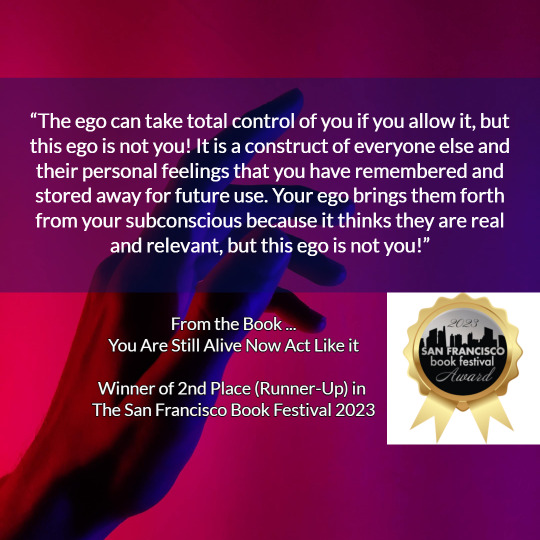
In my new book, "You Are Still Alive Now Act Like It" learn exactly where the egoic mind comes from, how it was created, and how to minimize its influence on your life. https://books2read.com/RayCatania
#limitless#spiritual#awakening#enlightenment#spiritualawakening#nde#afterlife#mindset#parapsychology#metaphysical
18 notes
·
View notes
Note
Wanted to ask you something related to NDE's: I've seen waaaay too many scientific skeptics attempting to write them off as caused by a gland in the brain, or a result of the drug DMT, or a mix of drugs in the brain trying to calm you before death... But. there is not only not ACTUALLY substantial evidence that ALL of the NDE is caused by so (specially in patients who's brain already is basically dead) but I've seen waay to many people shrug off the specific VERIDICAL cases where people learn of either things that will happen or are happening around them that they should have NO WAY OF KNOWING. They just /casually/ shrug it off. Cast it aside. Ignore it.
Why do you think they do so? Because they know that veridical NDEs break their hypotheses? Because they cannot reasonably explain HOW people can do this and it makes them uncomfortable?
Science is, at its worst, just another religion. If the study methods, the subject or people's experiences don't match the current scientific dogmas of the said field, then it must be a hoax. I mean, even with evidence, we have so many old cases where some scientist says "Hey there's this new evidence, I think this is valid" and others are "No, that's bullshit, just a delusion".
I personally try to think that we're scientifically always living some "dark ages", and while we have information and understanding, we should remember that we don't know it all yet. Technology evolves and gives us more and more access to something which was inaccessible before. Scientific hard facts in the past were that the Earth is the central of the universe, asbestos is fine, arsenic is not dangerous, women have hysteria, being a gay is a mental disease, and uterus is an organ which travels all around the body. Heck, even such a new thing than black holes were just a theory when I was young and now they're been proven to be real! What are such "dark age" scientific facts of our own time which will be proven wrong, or even harmful, in the past decades or centuries?
Scientists (and doctors) want to keep their jobs. Get labelled as one of these "nut cases" and you lose your job. Behind the hidden doors, doctors, nurses and surgeons admit to their patients that many have had an NDE. There's a good case about that with Anita Moorjani, who had an NDE and she recovered miraculously from a cancer. Her doctor agreed with everything which she said but when media interviewed her doctor, he brushed it all off as nonsense to keep his job and credibility. Who wants to be the first to be taken on a stake and burned as a modern witch for their scientific heresies?
Quantum biology is something which is being studied and one of its topics is consciousness. What is it, where is it, what happens to it? I think many quantum level studies have lots of similarities to spiritual topics, like quantum particles being connected and "aware" of each other, no matter what the distance.
Eben Alexander's case is scientifically one of the best NDEs, simply because his brain was in such condition that no activity was supposed to occur, not even on a subconscious level. I think Anita Moorjani is scientifically one of the best cases, too, and widely medically documented.
And yet, if you have made your mind that this is not science but some nonsense, no evidence will not change your mind.
And it's OK, in this case.
28 notes
·
View notes


